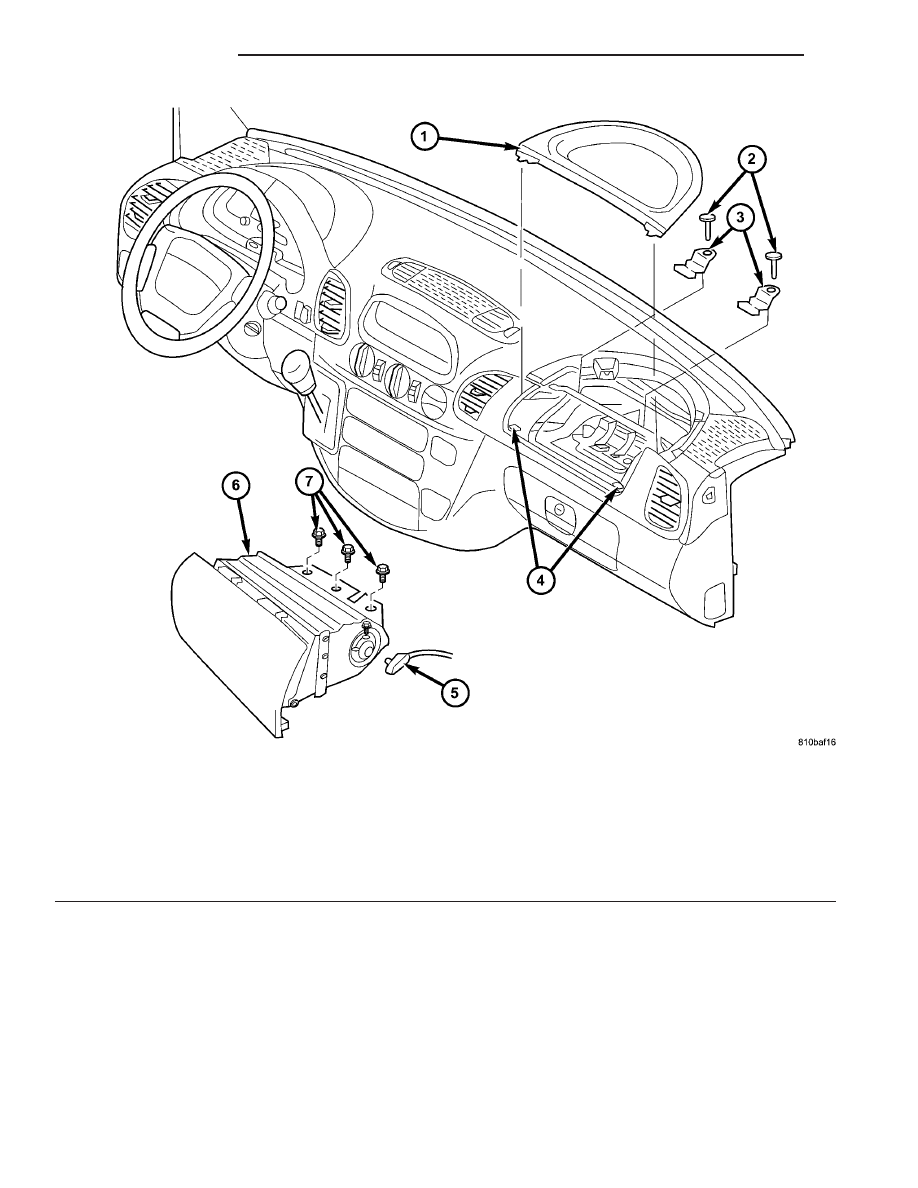Dodge Sprinter. Manual - part 76

(3) Remove the two screws that secure the passen-
ger airbag door upper clips to the instrument panel
base trim.
(4) Remove the three screws that secure the flange
of the passenger airbag housing to the bracket on the
instrument panel structural support.
(5) Pull the passenger airbag unit rearward to dis-
engage the airbag door from the lower clips and far
enough to access the electrical connection on the
right end of the unit.
CAUTION: Do not pull on the wires to disengage
the connector from the passenger airbag inflator
connector receptacle. Improper removal of the con-
nector insulator can result in damage to the airbag
circuits or the connector insulator.
(6) The vehicle wire harness connector is a tight
snap-fit into the airbag inflator connector receptacle,
which is located on the right end of the passenger
airbag housing. Firmly grasp and pull or gently pry
on the connector insulator and pull the connector
Fig. 29 Passenger Airbag Remove/Install
1 - TRAY
2 - SCREW (2)
3 - UPPER CLIP (2)
4 - LOWER CLIP (2)
5 - CONNECTOR
6 - PASSENGER AIRBAG
7 - SCREW (3)
8O - 26
RESTRAINTS
VA